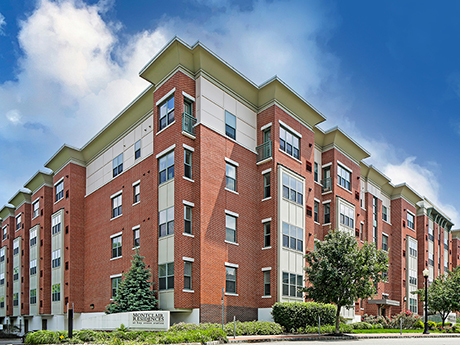By Mike Oliver, managing director, JLL Capital Markets
Fundamentals remain strong within the multifamily markets of Northern New Jersey and the greater metro New York City area, though the dynamics have continued to shift since the onset of the pandemic.
During COVID-19, there was movement away from urban areas toward the suburbs, creating a “tale of two cities” market dynamic. The suburban multifamily market became red-hot while urban markets cooled. Vacancies dipped below 80 percent in some instances, with heavy concessions being offered and flat to negative gross rent growth.

Mike Oliver, JLL Capital Markets
Today, while the suburban markets remain very strong, urban markets are also now red-hot. This is attributable to more and more people heading back to urban centers in anticipation of returning to the office or simply wanting to be back in the excitement of downtown living and its dining, shopping and entertainment options.
Additionally, many renters are being priced out of and fleeing Manhattan, Brooklyn and other New York City neighborhoods. Jersey City and the Hudson Waterfront provide attractive rental options with incredible access into Manhattan.
Jersey City, for example, is demonstrating healthy fundamentals, as occupancy rates are back over 95 percent with strong growth on lease trade-outs. There are examples of new leases being signed at 12 percent gross rent growth or higher, while renewals tend to be closer to 8 percent or above growth on a gross basis. Amid ongoing supply shortages, stabilized product in Jersey City is largely devoid of rental concessions.
In terms of new construction, Jersey City is experiencing historically high lease-up numbers, particularly in the Waterfront, Journal Square and Bergen-Lafayette areas. Some developers and leasing companies are signing 200 leases per month at opening. In past years, 40 to 50 leases per month was a notable number in strong markets.
In the suburbs, leasing activity continues to be strong with limited turnover, which is pushing rents up significantly while concessions remain nonexistent.
One of the drivers in the multifamily market is the continued tightness in the for-sale market. Home prices remain very high, and many are finding they either can’t afford to buy or can’t find a home to buy.
Strong rent growth and low vacancies prompted investors who were sidelined during the pandemic to aggressively pursue acquisitions in 2021. JLL’s research shows that transaction volume for the Northern and Central New Jersey market last year reached $5.5 billion, a noticeable improvement over the $2.2 billion and $3 billion recorded for 2020 and 2019, respectively.
Moving into 2022, the rise in interest rates has impacted the debt market via increased borrowing costs. Buyers are not immune to this spike, and it does impact underwriting. While there has been a modest correction in the sales market this year, 2021 was a record year, as interest rates were at all-time lows and investors returned to the market in full force.
During the past year, most investors have followed the market trends, primarily seeking suburban properties. However, there has been a noticeable shift in 2022 back toward urban areas, which is poised for significant growth in net operating income following two years of stagnation.
Among the notable transactions in which JLL was involved between March 2021 and March 2022 are:
• Mill Creek’s acquisition of the 163-unit Montclair Residences at Bay Street
• A private buyer’s purchase of the 652-unit Eaves Lawrenceville
• Pacific Urban’s acquisition of the 328-unit Union at Lyndhurst
• Skylight and PCCP’s purchase of the 226-unit Riello in Edgewater for $130 million
• A private buyer’s acquisition of the 240-unit Berkshire Stewards Crossing
• A private buyer’s purchase of the 232-unit Parc at Princeton Junction for $92.1 million
According to JLL’s research, construction activity continues to be robust throughout the Northern and Central New Jersey region. Between 2019 and 2021, more than 8,500 units were delivered to the market. For 2022, there are nearly 12,000 units in lease up or under construction, with an additional 40,800 units planned for 2023 and beyond.
Looking Forward
While there are obviously outside variables that could potentially affect the market’s momentum — the war in Ukraine, discussions of a pending recession and record-high inflation — fundamentals in most multifamily markets in the Northeast are not expected to slow down anytime soon.
There is significant construction in the pipeline in response to what feels like unlimited demand for product. While construction costs are going up, they are largely being offset by rising rents.
Further supporting the strength in the multifamily market is the overall strength of New Jersey, which attracted a diverse spectrum of employers last year, including 15 Fortune 500 companies. This activity has resulted in the recovery of more than 90 percent of the total jobs lost at the outset of the pandemic. Life sciences/pharmaceuticals, healthcare, financial services, advanced manufacturing, technology and transportation/logistics will remain the leading drivers of economic growth in the Garden State.
In addition, New Jersey’s population is moving in a positive trajectory, approaching levels last recorded in 2017, with a natural increase of 12,700 residents at year-end, compared to a net loss of 8,724 in 2020. These demographic trends have and will continue to have a positive impact on the multifamily market for some time to come.
— This article originally appeared in the June/July 2022 issue of Northeast Real Estate Business magazine.


